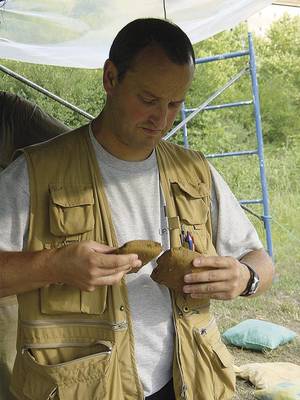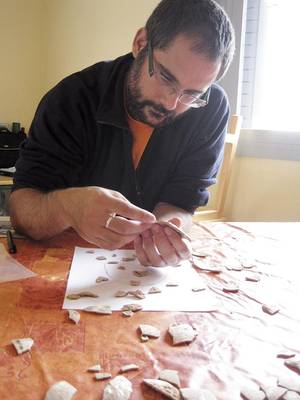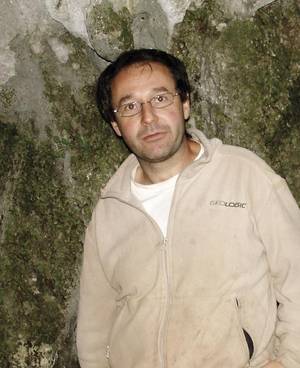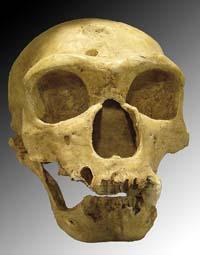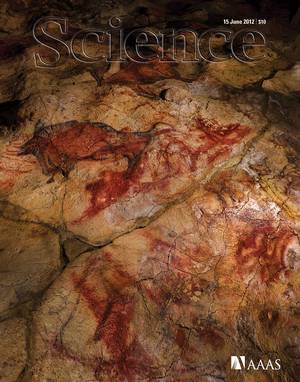Neanderthal symbolism under examination
2013/09/01 Jauregi Larretxea, Oihana - Elhuyar Zientzia | Zubia Gallastegi, Bego - Elhuyar Zientzia Iturria: Elhuyar aldizkaria
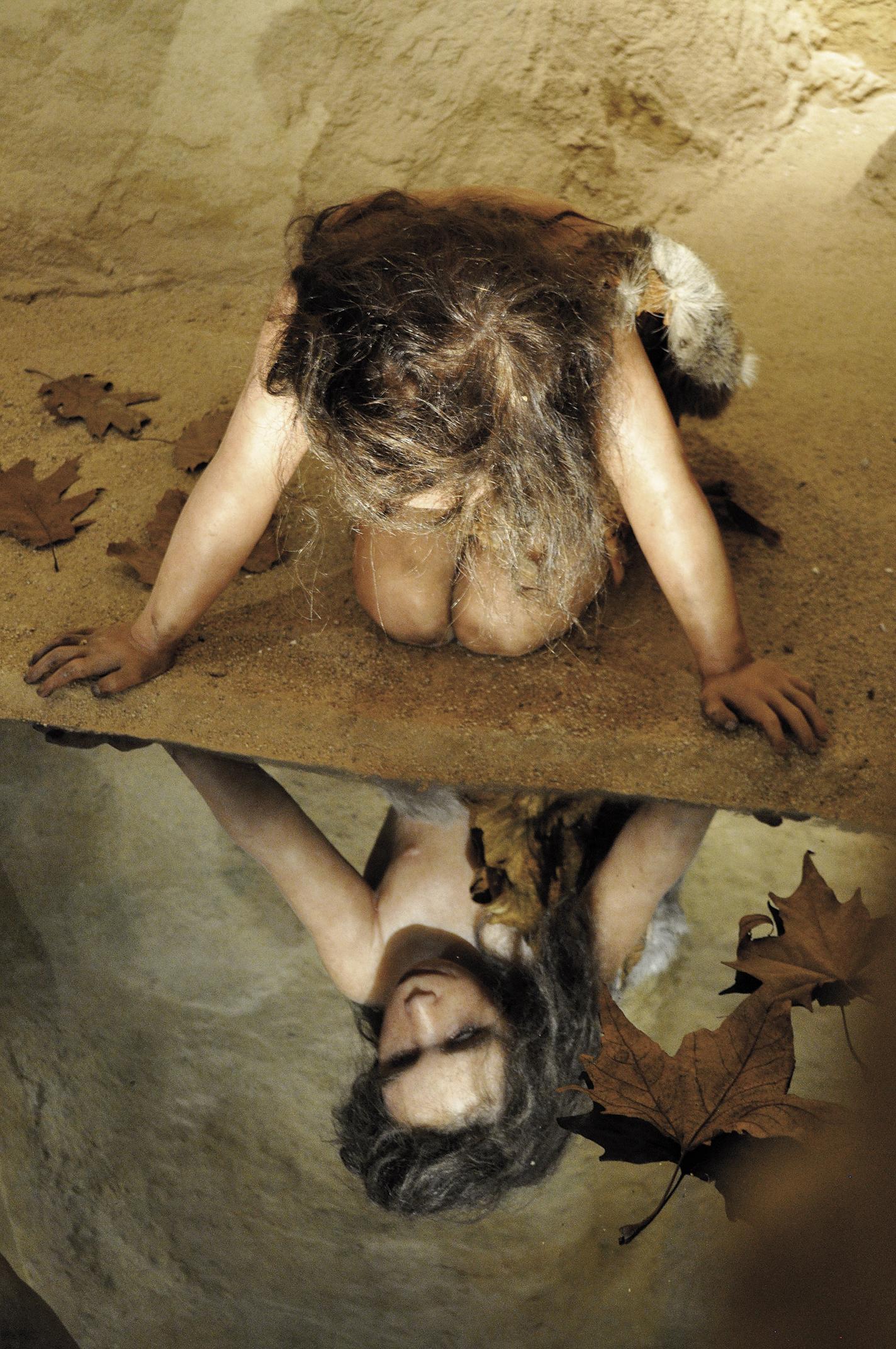
The debate on the capacities of Neanderthals is not today. For decades experts spread a rather pessimistic image of the Neanderthals. In comparison with modern man they recognized these lower old powers and, among other things, defended themselves that they were unable to express symbolically.
The discoveries of the last decade have changed this image. However, the change has not been sudden and has provoked serious scientific debates. Marcos García Díez, a researcher at UPV-EHU, considers that the basis of this debate is "the philosophy that has prevailed for centuries in the field of anthropology and archaeology." Linneo established the scientific name of modern man in the XVIII. In the twentieth century. The name of Homo sapiens means wise, thoughtful human being. That is, everyone has their actions. "Until fifteen years ago, this claim was an axiom of research, unquestionable," warns García Díez. "The symbolic attitudes or the capacity of abstraction shown by the individual conscience corresponded exclusively to the sapiens man. This affirmation has conditioned archaeology."
But in the last decade, hangers, colourings, pieces of mobile art and burial remains have been found in various Neanderthal sites. All of them are elements directly related to the symbolic capacity of expression of Neanderthals, so scientists have recognized their capacity for symbolism.
In Euskal Herria several Neanderthal deposits have been induced and investigated. One of them is Lezetxiki de Arrasate. The UPV professor, Alvaro Arrizabalaga, has been the director of the excavations of the site in recent decades. Invited by the University of Cologne and the Neanderthal Museum, he has just completed a two-month stay in Germany and is defined as "very Neandertalist". "They had no physical disability or capacity," he said when defining those human beings who lived in Europe for more than a hundred thousand years.
However, before speaking of symbolism, Arrizabalaga considers it essential to make a precision: "Symbolism is not fooled and we are experts in interpreting what is fosilla". The use of languages, pigments, pendants and ornaments, burials and rock art are symbolic activities of a different level, which Arrizabalaga wanted to analyze individually when speaking of the symbolism of the Neanderthals.
There is no doubt about the use of language. It says that the Neanderthals used the language of relationship and expression of thoughts. "There is no doubt that they had language." It is of the same opinion the archaeologist Joseba Ríos, who works in the Center of Investigation of Human Evolution (CENIEH) of Burgos: "Analyzing the stone tools we observe that the learning processes were necessary. The transmission of knowledge for the realization of certain instruments had to have been, probably, the language used."
Death is an important field of symbolic expression among modern men. According to the scientists, it was also among the Neanderthals. The burials found in some deposits would be proof of this. "The funeral behavior was not universal, but there were Neanderthals," said Arrizabalaga. "We must also take into account that some behaviors related to funerals are not fossilized."
Rios also considers that we must avoid generalities: "In different times and places the Neanderthals were different." Neanderthals lived in Europe for 100,000 years. During that long period of time it changed, it evolved. "The tools left by the Neanderthals represent different forms of social organization, spatial, territorial and tool organization," says Ríos. Not all Neanderthal societies, therefore, behaved in the same way, did not face death equally and some of those human groups, not all, infled the dead.
When analyzing the use of pigments, pendants and other decorative elements, problems are added and scientific debates are estimated. "Let's imagine a pyramid," explains Arrizabalaga-. If we think there are symbolic behaviors spread at the base of this pyramid, we will say that language is at that level. As we ascend the pyramid, symbolic behaviors will decrease. Burials would be in the background; it can be said that they are not general but abundant symbolic behaviors. But the pendants are at a higher level. That is, they are scarce and not all scientists agree on that point."
Arrizabalaga himself argues that the Neanderthals used decorative elements. "In Lezetxiki there is a red shell brought from the Mediterranean. I think this shell was used as a pendant and that can show that the Neanderthals who lived in Lezetxiki used pendants. But it must be taken into account that we are reaching the top of the pyramid, he added. That is, we are talking about symbolic behaviors that are increasingly rare and scarce."
García Díez also proves that the Neanderthals used pendants. "Pendants are not essential elements for survival. They are related to the field of aesthetics and to the achievement of notoriety in the group - the researcher affirms -. Dyes can also be very used, among others, to decorate the body; in some Neanderthal deposits have been found dyes used to rub bodies. This means indirectly that between 50,000 and 60,000 years ago it existed."
The scarce finding of remains is due to the low density of Neanderthal populations, according to García Díez. "We know that the Neanderthals were less numerous than the populations of sapiens. Therefore, finding fewer clues does not mean that in these human groups those expressions of symbolism were not rooted. If human density is less, we will find fewer clues."
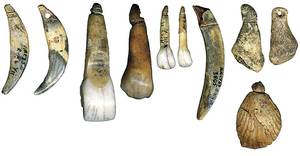
Finally, at the top of the pyramid described by Arrizabalaga is the rock art. The authors of the new dating of the cave of El Castillo in Cantabria have put on the table the hypothesis that the Neanderthals left their mark on the rocks. García Díez stressed that "it is possible that Neanderthals also have the capacity to make rock art. To date, it has not been shown that Neanderthals had the ability to see an image, process it in the brain and express it plastically. We see points, hands, signs. In this context it should not be surprising that Neanderthals have this capacity."
For the researcher García Díez is also significant the discovery of bones and small stones decorated in several European Neanderthal deposits. "They are pieces of parallel lines and decorated with succession of points, from 60,000 to 42,000 years ago. If they had the ability to decorate this type of pieces, why could they not make signs like the disc of 40,400 years we have dated in the cave of El Castillo? ".
For Arrizabalaga and Ríos, however, the new datations do not show it. It cannot be said that the Neanderthals made rock art. "Absolutely of the information that exists to date," said Arrizabalaga. "I have always thought that the Neanderthals have been mistreated. There may be new datations in the future and may occur. But taking into account the information we have today can't be said that."
"The option, already exists. They had a symbolic behavior and, consequently, there is the possibility. But I think this option is very small, - adds Riosec-. They had capacity for symbolism and, if necessary, for rock art. But in addition to capacity, historical conditions must be given for the development of art. There must be certain biological capacities to develop art and symbolism, for abstraction. But in addition, art has a social meaning and not all human groups have developed sustainable art, nor modern human teams."
The Neanderthals had more than a hundred thousand years of history. Due to unknown causes that lived in Europe and Asia, their residence was limited to the Iberian peninsula and disappeared. A human species with a long history that left many vestiges. Taking into account the traces that have been found, analyzed and interpreted and the knowledge that exists so far, "we must relativize the interpretation that the images of El Castillo were made by Neanderthals - Arrizabalaga-warns. Minimum security measures must be taken, since this affirmation is contrary to all the reality we have so far. It is a very old painting, but new dating is necessary. Until the dating is in 6-7 places, it cannot be said that the Neanderthals made rock art," added Professor Arrizabalaga.
For Ríos there must be differences between Neanderthals and modern man, and "the differences are evident in the capacity of symbolic expression. The first modern men who arrive in Europe, from their arrival or very soon after, develop surprising capacities of symbolic expression. In almost all deposits appear hanging, decorative utensils, first works of art, painted animals, magnificent pictures of the cave of Chauvet, for example. And the Neanderthals were not able to do so or, at least, they have not left their mark," said Ríos.
The research team involved in García Díez will carry out in the coming months new dating of cave paintings. One of the conclusions of the work can be to clarify whether the Neanderthals made art on the cliffs.

Gai honi buruzko eduki gehiago
Elhuyarrek garatutako teknologia



